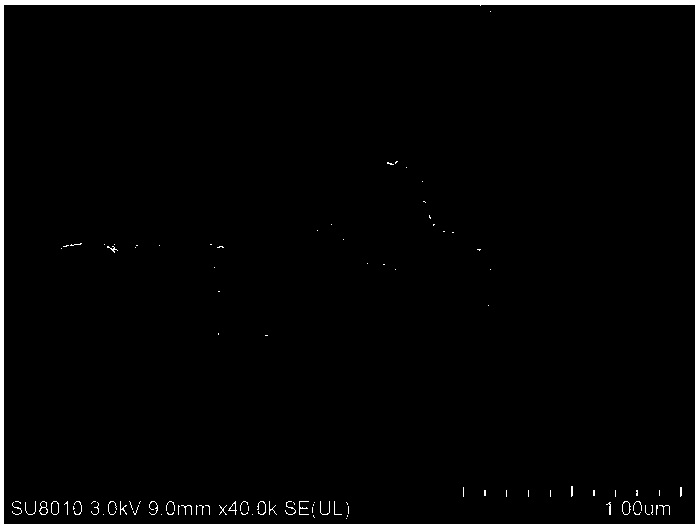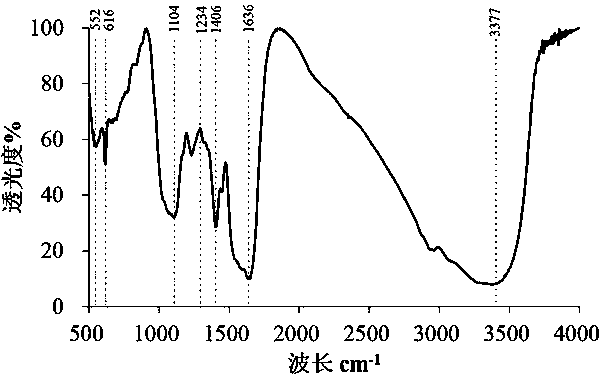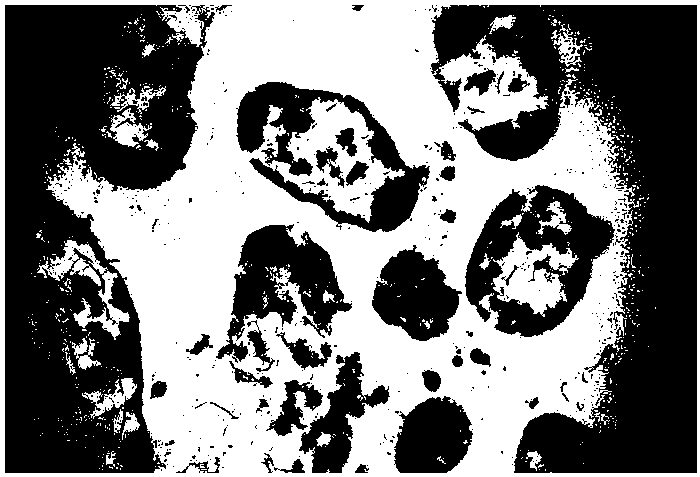A kind of Bacillus paralicheniformis and the method for preparing bio-nano-selenium-enriched probiotics
A Bacillus licheniformis and bio-nano technology, which is applied in the field of microbial fermentation, can solve problems such as potential toxicity of products, and achieve the effects of improving antioxidant activity, repairing oxidative damage and improving economic benefits.
- Summary
- Abstract
- Description
- Claims
- Application Information
AI Technical Summary
Problems solved by technology
Method used
Image
Examples
Embodiment 1B
[0027] Example 1 takes B. paralicheniformis Preparation of bionano selenium-enriched probiotics with ZJUSE-1 and sodium selenite
[0028] 1. Culture medium preparation
[0029] LB plate medium: NaCl 10g, tryptone 10g, yeast extract 5g, agar 20g, deionized water 1L, high temperature sterilization at 121°C for 21min.
[0030] Seed medium: glucose 15g, tryptone 4g, yeast extract 6g, NaCl 10g, deionized water 1L, high temperature sterilization at 121°C for 21min.
[0031] Fermentation medium: glucose 20g, tryptone 10g, yeast extract 10g, K 2 HPO 4 1g, NaCl 5g, MgSO 4 15g, 1L deionized water, initial pH 7.0, high temperature sterilization at 115℃ for 30min.
[0032] 2. Strain activation
[0033] frozen at -80°C B. paralicheniformis Thaw the ZJUSE-1 strain at room temperature, take a ring and streak it on the LB plate medium, and incubate at 37°C for 12 hours.
[0034] Pick a single colony from the plate medium and inoculate it in the seed medium, and cultivate it at 37°...
Embodiment 2
[0041] Example 2 B. paralicheniformis Analysis of the Tolerance Ability of ZJUSE-1 to Sodium Selenite
[0042] 1. Medium configuration
[0043] Prepare LB plate medium containing sodium selenite at gradient concentrations (0, 5, 10, 15, 20mM).
[0044] 2. Strain activation
[0045] frozen at -80°C B. paralicheniformis ZJUSE-1 strains were thawed at room temperature, and one ring was streaked on each selenium-containing LB plate medium, and cultured at 37°C for 24 hours.
[0046] 3. Analysis of results
[0047] After the incubation, the results showed that B. paralicheniformis ZJUSE-1 can grow in LB plate medium containing up to 15mM sodium selenite.
[0048] Sodium selenite belongs to the 6.1 class of highly toxic chemicals. In the production of nano-selenium, if there is sodium selenite residue in the product, it is very easy to cause harm to subsequent production and application.
[0049] In the preparation method disclosed by CN1706459A using selenium-enriched la...
Embodiment 3
[0050] Example 3 Characteristic analysis of bio-nano-selenium-enriched probiotics
[0051] 1. Field SEM results
[0052] Get the bionano selenium-enriched probiotic product in Example 1 and fix it with 2.5% glutaraldehyde for 12 hours. Washed with PBS, fixed with 1% osmic acid, dehydrated with alcohol gradient, treated with isoamyl acetate, dried at the critical point, coated, and observed under a field emission scanning electron microscope.
[0053] The result is as figure 1 Shown: B. paralicheniformisZJUSE-1 reduces sodium selenite to generate bionano-selenium, and secretes organic matter to wrap and release bionano-selenium to the extracellular space. The arrow points to the biological nano-selenium.
[0054] 2. Fourier Transform Infrared Transform Spectroscopy Results
[0055] Take the biological nano-selenium-enriched probiotic product in Example 1 and dry it in an oven at 60° C. for 12 hours. Take the dried product and detect it by Fourier transform infrared tran...
PUM
 Login to View More
Login to View More Abstract
Description
Claims
Application Information
 Login to View More
Login to View More - R&D
- Intellectual Property
- Life Sciences
- Materials
- Tech Scout
- Unparalleled Data Quality
- Higher Quality Content
- 60% Fewer Hallucinations
Browse by: Latest US Patents, China's latest patents, Technical Efficacy Thesaurus, Application Domain, Technology Topic, Popular Technical Reports.
© 2025 PatSnap. All rights reserved.Legal|Privacy policy|Modern Slavery Act Transparency Statement|Sitemap|About US| Contact US: help@patsnap.com



